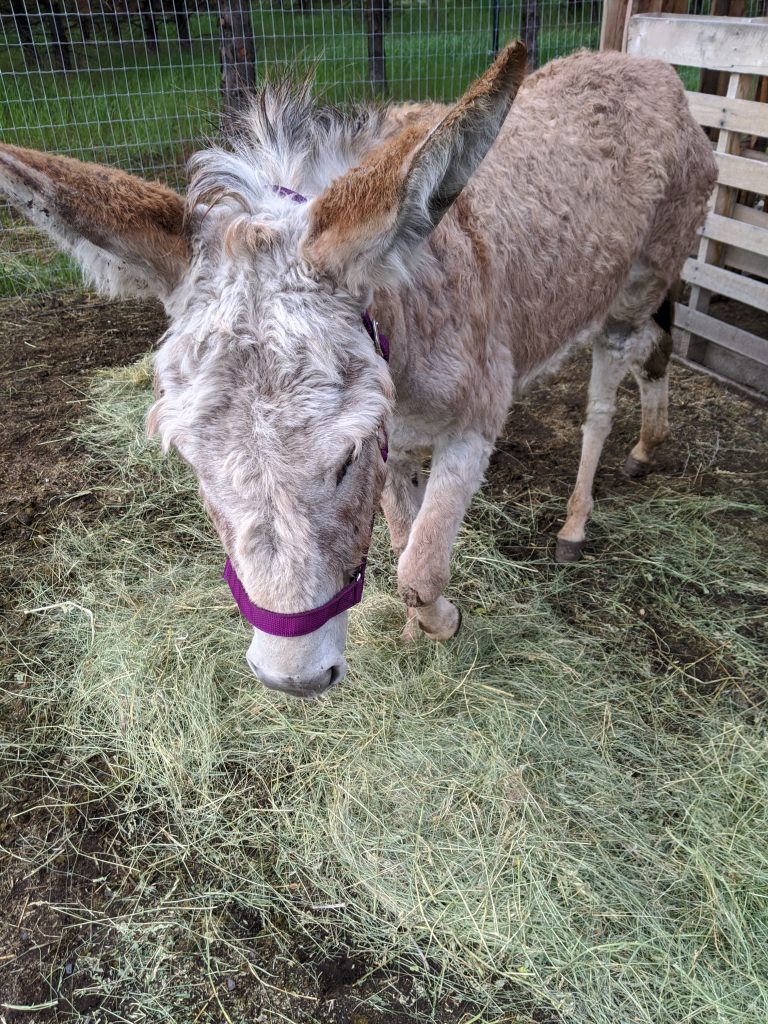I want to talk for a moment about the concept of protected contact. Typically protected contact in animal care and training is defined as the trainer and the animal not inhabiting the same unrestricted space. There is typically a barrier of some type, but the animal is free to move away from the training space at any time.
Protected contact is often used with zoo animals, and large or dangerous non-domestic animals in captivity. It is used in training behaviors for shows and enrichment, and for training husbandry behaviors in order to make medical care and handling as stress free as possible for the animals. It is also frequently utilized in the positive reinforcement based equine training community, utilizing stall guards and rail fences to prevent unwanted behavior and contact from the animal. See this video of me working with one of my donkeys under protected contact.
Where I think we don’t use it enough, or to its full potential, is in dog training. Dogs are friendly, and probably not going to hurt us, right? That’s probably true, but even if it is, we’re missing out on a big opportunity to manage our dogs’ behavior and set them up for success in so many ways! For puppies, teaching a sit in an exercise pen to ask to be picked up, or to be let out of the pen. For adult dogs who tend to jump on people when greeting, an ex pen or baby gate can be used to prevent successful practice of the jumping, while giving the trainer/handler time to reinforce for the behavior they do want, like sitting, or 4-on-the-floor. Protected contact can be a great choice for dogs who paw, or rub against people excessively.
Protected contact can also really enhance our skills as trainers, by preventing us from physically manipulating the dog, leaving us to rely on shaping and luring skills, good timing, and precise delivery of reinforcement (treats, pets, toys). Working with a dog you cannot touch really helps build observations skills, and helps the dog learn some autonomy, making the choice to engage in the training, and doing tasks/skills without physical prompting.
Protected contact can also be helpful for dogs with reactivity, a trainer can set up a scenario in which the dog is behind a barrier, with lots of space to move away, the handler can be in the space with the dog, and a second handler or trainer can move whatever triggers the reactivity, be it another dog, a person, a bicycle, a skateboard, around outside the barrier, at enough distance that the working dog is comfortable, and can be reinforced for any alternate behaviors offered to the handler, or cued to do well known behaviors by the handler, and reinforced heavily for those. The dog doesn’t have to be on lead, and can be heavily reinforced for choosing to move away from the barrier/trigger. It will also be much easier for the handler, who doesn’t have to try to handle a lead, have the worry of accidental contact, and can focus on body movement and any good choices that the dog makes. It gives the dog more choices, as well. Since handlers often unknowingly hold a dog in a space where it is uncomfortable, they can often increase the reactivity, instead of decreasing it. So having the dog off lead creates an easier environment for the dog to make good choices on it’s own, and be reinforced for them.
Protected contact is an excellent choice for resource guarding issues, using protected contact to build a strong reinforcement history without risking being bitten, and managing the dog so there is no possibility of the dog making poor choices. Carrying out a resource guarding protocol under protected contact is much more beneficial to the dog than being tethered for the same treatment, as the dog has options to move away, and doesn’t feel constrained.
Finally, if you do happen to be working with a dog who has aggression issues, protected contact is the best way to build a reinforcement history, install some foundation behaviors, and familiarize yourself with the dog’s triggers and general behavior without danger of being bitten, or creating a bite history for a dog who doesn’t currently have one.
If you’re working on training with any sort of animal, give protected contact training a try, you may find a whole new tool for your toolbox, that you can enjoy and employ.

